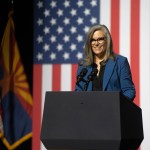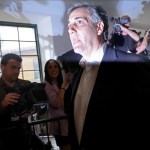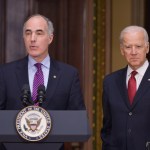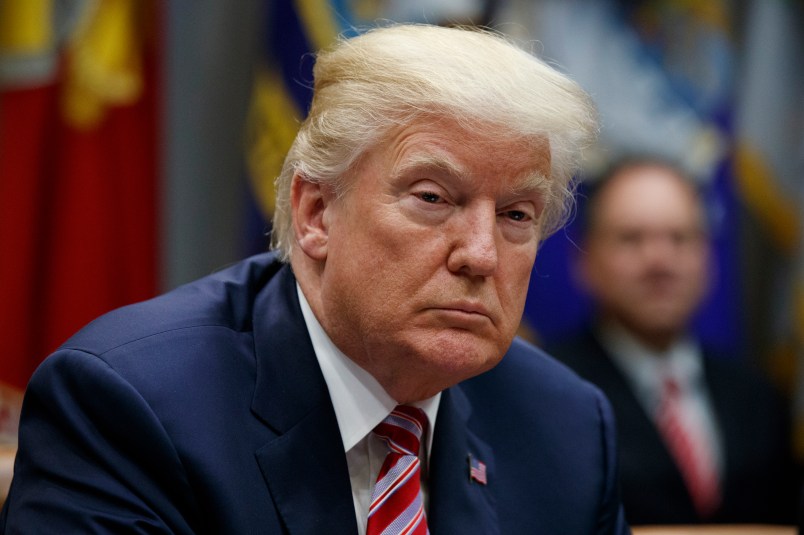Under President Obama, Obamacare’s open enrollment period typically kicked off with a bang—appearances by the President on late night TV and in viral videos, social media blitzes led by the secretary of Health and Human Services, press conferences highlighting Americans getting health insurance for the first time, daily conference calls between government and outside advocacy groups, and barrages of emails to millions of Americans reminding them to sign up for coverage or risk paying a tax penalty.
This year, when the first full open enrollment period of the Trump administration began on Nov. 1, things looked very different.
For one, it’s the first open enrollment period since the creation of the Affordable Care Act with no HHS secretary at the helm. Tom Price resigned in late September after reporters exposed his habit of taking pricey private jets at taxpayer expense, and President Trump has not yet nominated his replacement. His temporary stand-in, Acting Secretary Eric Hargan, gave a little-noticed speech on the first day of open enrollment, calling the ACA “misnamed” and “unworkable and unsustainable.”
“Ultimately, we want to see Congress replace the Affordable Care Act with a system that has competition and choice at its heart, rather than the assumption that central planning is the solution for everything,” Hargan said.
Under Hargan’s leadership, HHS has over the past week sent out fewer email enrollment reminders to millions fewer people than in previous years. In the past HHS sent these email alerts to more than 20 million people—both those currently enrolled in a Healthcare.gov plan and those who had visited the site just to look or had started an application but did not complete it. This year, only those enrolled in the federal marketplace received the reminder.
In another sharp departure from past years, the emails also failed to mention the affordability of most insurance plans or the tax penalty people have to pay if they don’t enroll.
Josh Peck, the chief marketing officer for open enrollment under the Obama administration, told TPM that years of data showed him that those two messages were major enrollment drivers.
Former HHS spokesperson Ben Wakana said those points were particularly important for convincing young people who may not not think they need coverage to enroll.
“We found that millenials really responded to the message that they would pay a penalty if they didn’t buy health insurance,” he told TPM.
The rollback of email communication comes on the heels of the Trump administration gutting its overall outreach budget for open enrollment—slashing advertisement and outreach funding by 90 percent and grants for in-person assistance by more than half.
HHS also severed partnerships this year with hundreds of outside groups that worked with the government in past years to promote open enrollment. Many of those outside groups have launched their own open enrollment outreach efforts to try to make up for the federal cuts, but acknowledge there is no way they can match the loss in federal dollars.
Erin Hemlin with the youth engagement organization Young Invincibles told TPM it plans to run digital ads in at least 10 states, hold enrollment events on college campuses, and work to connect people who need help signing up with a volunteer in their area. She said the lack of communication and misinformation from the Trump administration makes the effort from outside groups more important than ever.
“The new deadline is a big concern of ours,” she said. “There are only 45 days to enroll this year, and lot of people who just don’t realize that December 15 is the deadline will wait until January to enroll and be out of luck. There is also a lot of confusion and intimidation about high premiums, and people don’t know what tax credits mean and what they’re eligible for. They don’t know that [cost-sharing reduction subsidies] are still available, and that plans might actually be cheaper than they were last year.”
President Trump, for his part, did not even acknowledge the beginning of open enrollment at all, while his press secretary remarked from the podium on its first day: “Obviously, we’ve never made it a secret that we’d like to repeal and replace Obamacare.” Trump has this week lobbied Congress to include a provision repealing Obamacare’s individual mandate in the GOP tax bill—a move expected to trigger a “death spiral” in the individual market.
In a bizarre turn, former President Barack Obama stepped in to promote his signature policy, cutting a PSA for the newly-formed organization Get America Covered encouraging enrollment.
Still, several independent studies predict that enrollment will drop significantly compared to last year in direct response to the Trump administration’s budget cuts and policy changes, creating a sicker, more expensive, and less stable risk pool going forward.










